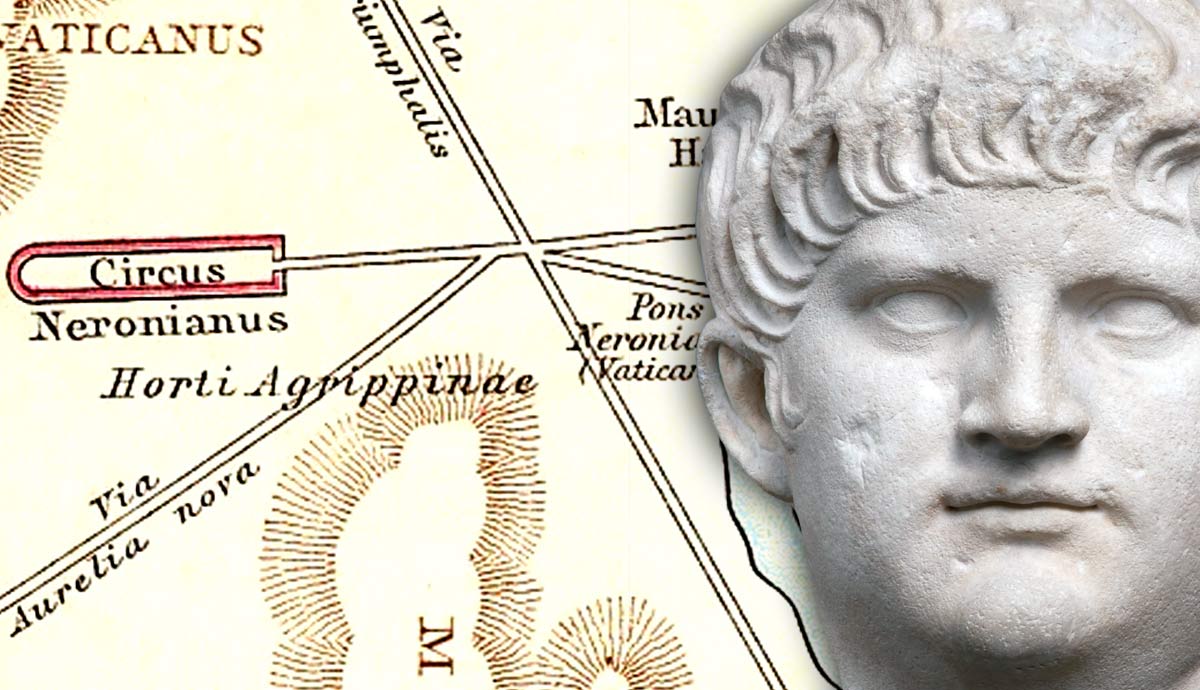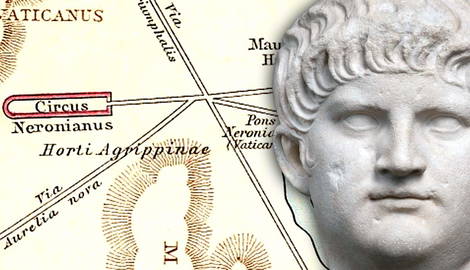
The common perception of Emperor Nero is that of a madman, a brutal autocrat, a murderer, and even the Antichrist. He is the infamous image of the deranged man who sang epic songs, playing the fiddle while Rome burned to cinders. Thankfully, nowadays, this perspective is increasingly challenged, resulting in an image of a much more complex ruler who had his flaws but was also victimized by his enemies, a ruler who made significant contributions to Rome and the Roman Empire and presided over the last period of peace before the empire was plunged into a brutal civil war. Here are some of Nero’s most significant contributions that affected Rome and its people.
Emperor Nero Was a Patron of Arts and Sports

All of Emperor Nero’s predecessors were military leaders and able politicians. They were also patrons of arts and organizers of lavish games. However, Nero went beyond his duties as a benefactor. The emperor deeply appreciated arts and culture. Nero was a skilled lyre player and singer, often participating in public performances and artistic competitions. He also competed in numerous sports disciplines, including the famed Olympics. Unsurprisingly, Nero won all the challenges (in part because no one wanted to challenge an emperor). Nero’s patronage of arts and sports and his direct participation in numerous activities made him incredibly popular among the common folk, who considered the emperor their protector.

However, his down-to-earth approach earned him criticism from senatorial elites, who considered his acts unworthy of an emperor. Pliny described Nero as actor-emperor, and Suetonius lamented about Nero’s direct participation in chariot racing or athletics.
Nero Built “The Golden House”

Following the Great Fire of Rome of 64 CE, Nero embarked on an extraordinary construction project. Perhaps too eagerly, as Nero’s critics used such enthusiasm against the emperor, accusing him of starting the fire. While Nero was probably not to blame, his lavish palace – the Domus Aurea or Golden House – was truly an engineering marvel. The palace complex covered a vast area (over 100 hectares), including sprawling gardens, artificial lakes, vineyards, fountains, an army of statues, a host of buildings, and hundreds of rooms elaborately decorated by lavish frescoes, mosaics, marble, gold and gems. The centerpiece of Nero’s Golden Palace was an octagonal dining room – an architectural marvel of the ancient world. Its rotating ceiling created an illusion of the heavens in motion.

Once again, Nero’s critics used the extravagant complex as evidence against the emperor’s arrogance and detachment from reality. It seems, however, that Nero planned for at least some parts of the complex to be open to the citizens of Rome, with the emperor acting as their protector and the patron of the arts. Following his death, the Domus Aurea became a symbol of the hated regime and was razed to the ground, with the Colosseum built in its place.
He Rebuilt Rome and Improved Living Conditions

Augustus boasted that he had “found Rome a city of brick and left it a city of marble”, but in the first decades of the Roman Empire, the imperial capital was a huge, overcrowded, and chaotic city. Its streets were narrow, twisty and dirty, and most buildings were haphazardly built timber and mortar structures, many rising precariously seven or eight stories in the air, leaning over streets, shedding bits and pieces on unsuspecting pedestrians. In short, pre-Neronian Rome was a disaster waiting to happen. Thus, when the Great Fire broke out in 64 CE, it quickly spread out of control, devastating most of the city and sparing only four of Rome’s fourteen districts.

While Nero took advantage of the disaster to build his Golden House, the emperor also embarked on a colossal rebuilding program. More importantly, Nero passed and enforced new regulations to prevent recurring disasters. He ordered the widening of the streets, regulated the height and materials of the buildings, and established new organizations to oversee maintenance of the city’s infrastructure.
Nero Achieved Lasting Peace with Parthia

During Emperor Nero’s reign, the Roman legions were relatively peaceful. The most notable military engagements were the quelling of the rebellions in Britain and Judaea and the war with Parthia, which resulted in peace favorable to Rome. Like his predecessors, Nero did not personally lead the Roman army. It was his general, Gnaeus Domitius Corbulo, who, after five years of war in 63 CE, brought the Roman-Parthian war over Armenia to an end.

Armenia was a buffer state coveted by both Rome and Parthia since Crassus, and neither side could gain a decisive advantage. Corbulo managed to reach an effective stalemate. According to a treaty approved by Nero, Parthian candidate Tiridates remained the king of Armenia, but had to renounce his allegiance to Parthia and recognize Nero as his superior. Tiridates also had to travel to Rome, where he received the crown from Nero in a public ceremony. The treaty also established a friendly and cooperative relationship between Rome and Parthia, lasting almost half a century until Trajan’s reign. The treaty boosted Nero’s military prestige and allowed him to focus on other affairs.
Emperor Nero Sent an Expedition to Find the Source of the Nile

Among many of Emperor Nero’s achievements, one of the most adventurous and curious projects was undoubtedly the Nile expedition. Like most Romans, Nero was fascinated by the history and geography of Africa and Egypt, the wealthiest province of the Roman Empire. He also wanted to emulate the achievements of Alexander the Great. Perhaps to explore the ground for potential invasion deep into the heart of Africa, Nero organized and dispatched the first scientific expedition in history to find the source of the Nile River.

In 61 CE, under Nero’s patronage, a group of soldiers, explorers and scientists, led by two centurions of the Praetorian Guard, embarked on an expedition. They left Alexandria and followed the course of the Nile upstream. Braving many challenges and dangers, the Neronian explorers reached the city of Meroe, in modern-day Sudan, the capital of the kingdom ruled by a warrior queen. From Meroe the expedition pushed further south, encountering many exotic animals and never-before-seen places. Eventually, they reached the vast swampy area known as the Sudd – a large swamp located in southern Sudan. It is possible that the Neronian explorers ventured even further, all to the Murchison Falls in Uganda, and came very close to the source of the Nile. However, Nero’s death in 68 CE prevented further missions or potential campaigns in the south.










